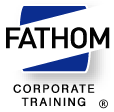No matter how fantastic a sales person you are, no matter how much training you have had, no matter who you work for or what you are attempting to market or sell, there is one thing that cannot be changed: Across all business segments today, and within each of those business segments, both products and services are available in an ever widening array of choice.
Consumers can “have it their way” today and they are! A customer can customize a car, and a non-fat-mocha latte brewed at 110 degrees. Customers are wide eyed with new choices and opportunity in the marketplace. They are savvier than ever, and the internet can help them find what they are looking for in seconds and compare what they have found to all the other choices available.
But this is not all! It gets worse, much worse. There is a very important phenomenon that has grown to epidemic proportions today in our society. We now suffer from what we can call a “consistent and a constant state of partial attention.”
Ask yourself this question: If a customer is in a store shopping, but is on the smart phone at the same time, are they really present and fully available to you as a retailer? The implications of this are immense as we try to garner the wandering eyes and minds of the consumer and direct them to what we have to sell. Dealing with this is a challenge, and if you choose to ignore it, your company’s success will wither on the proverbial vine of consumer choice and attention deficit disorder.
As a salesperson, what this should immediately spell out for you is: DANGER.
A state of constant partial attention, combined with a plethora of choice in both products and services means that your chances of being noticed in an ever deepening “sea of competition” are not only slim, they will continue to get slimmer in the future!
No matter what you are selling, gaining and keeping customers will become significantly more challenging in the years to come. This is especially true for commoditized products and services that typically are sold on price, with not much thought given to features that the salesperson and the overall brand contribute to value.
So, is it that we are doomed to competing on price alone and diminishing sales and margins if we sell highly commoditized products and services? The answer is yes, if we don’t understand one simple fact. Every firm selling a heavily commoditized product or service has unique and critical differentiation to brag about.
Sales consultants fail when they don’t have an understanding of the real differentiation that exists for the firm and the products and services they sell. Next, salespeople need to easily communicate this differentiation and map it to customer need, rather than throwing it at the wall like spaghetti.
Sales training can help salespeople understand specific areas of differentiation that exist for their offerings and techniques to communicate the right differentiators at the right time.
John Males is Founder and President of Fathom Corporate Training. With more than 20 years of experience in management, sales and negotiations, he helps clients increase employee satisfaction, lower turnover, increase revenue and raise profit margins.

